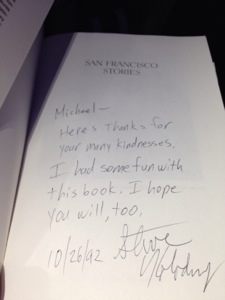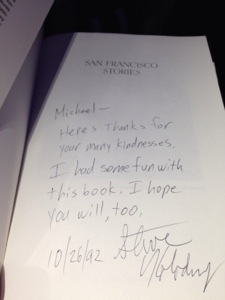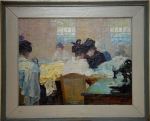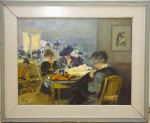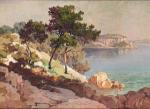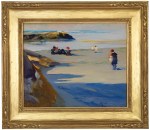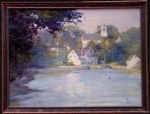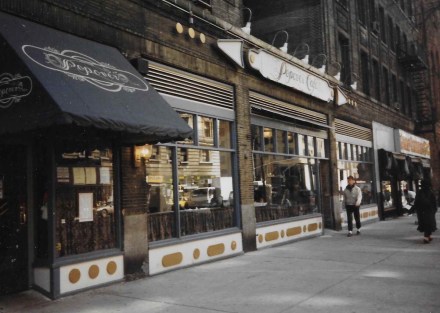
Among the photos and postcards in the box that I brought back to LA from Kansas, there was a picture taken on my Kodak of the restaurant where I worked in the early 90s. Popover Cafe.
The restaurant, located on Amsterdam Ave between 86th and 87th Street was known primarily for their crispy on the outside, fluffy and eggy on the inside, Popovers. Served with house made strawberry butter and preserves. Sometimes you might switch it up and eat your Popover with apple butter or plain honey. Or slice it in half and make a smoked chicken, mozzarella and roasted pepper sandwich. Or pop open the pastry, fill it with vanilla ice cream and hot fudge for a Popover Sundae.
I was a midwestern hayseed when I arrived at the Pop and sophisticated food was not in my oeuvre. But Popovers, I understood. Popovers, I could sell. Popovers, I could love. And I did.
Everything I learned about working in restaurants, I learned at Popover. Sure I’d worked that one summer at Pizza Hut in Kansas, but this was the big time. Or at least, a bigger time. Sure, my first celebrity sighting was a dull, if polite, Andre Gregory. But my second celebrity was Kevin Nealon, with his family. And in the three years I worked there, I waited on Kevin Bacon and Kyra Sedgwick, Uma Thurman, Lee Grant, Dody Goodman, Boyd Gaines (wearing a pretentious long wool scarf), Katie Couric (oversalting her cheese grits), Kate Nelligan with a frail, gaunt gentleman who clearly meant very much to her. Alec Baldwin and Kim Basinger at Sunday brunch looking like they’d just come from someplace much sexier than Mass. Maddie Corman, overhearing a gaggle of actor waiters wondering how young we looked for casting purposes, told us to relax, that she’d been playing teenagers for 20 years. Barbra Streisand came out of the ladies room on a quiet Friday night to ask the manager on duty if she would be willing to retrieve her eyeglasses from the toilet. The manager, a 23 year old recent graduate of the American Musical and Dramatic Academy (AMDA) was only too happy to comply.
I wasn’t the best waiter. In fact, they put me in the worst, smallest section every day. I actually liked it: smaller section, less things for me to get wrong.
It seemed that everyone I worked with offered me some kind of test. They asked me questions about church and my faith. They asked me questions that weren’t questions. “You do know you’re gay, right?” “No, I’m straight.” “Oh Honey.”
After hiding and editing myself for 23 years I was now playing to a different audience. These theater/artsy/waiter types didn’t want me to be some judgmental, boring Christian who said things like, “God is so rad.” But you know, once they found out I loved both Truman Capote and Kathie Lee Gifford, my secret did not stay secret for long.
So Popover is where I came out, not just as a gay man, but also as an upper west side member of society. It’s where I was given lists of books I needed to read, movies I needed to see, foods I needed to try. It was someone at Popover who said to me, “You simply must rent Grey Gardens. You’ll love it.” (I did.)
My first crushes on guys who were actually out gay guys were at Popover. The dreams I had that X would break up with his boyfriend Y and we would be together forever because I was the Charlene Frazier to his Suzanne Sugarbaker.
In 1994, I moved to Los Angeles and for 20 more years, each time I visited New York, I visited Popover Cafe. Often, it was my first stop on the island.
A few years ago, I brought Eric and he loved the place as much as I did. We would meet friends, and hide out in cushioned paisley seats, still surrounded by stuffed bears, and we’d eat popovers and drink hot chocolate or steamed apple cider and reminisce about some of our favorite days.
A few years ago, Popover closed, presumably, forever. It had a great run, with credit due to owner Carol Baer and longtime employees like Bill and Joan.
I took some satisfaction in the years when the building stood empty. Frozen. As if the universe knew what we knew, something as special as Popover Cafe could never be replaced.
Finally, a new restaurant has opened. I’m sure it’s fine. My heart of course, will only be true to one occupant of 551 Amsterdam.
So many stories, epic highs and devastating lows: falling in love, weddings, divorces, love affairs, breaking up marriages, deaths, exploring art, being too hungover to work on your art, starting a family, losing a parent, giving up on your art.
Popover Cafe is gone. And yet, for some of us, it is never faraway. Especially for formerly young men and women like me who walked through those double doors at the most impressionable and hungry time of their life. I’m so glad I didn’t end up at Sarabeth’s. Although I’m sure those folks have their own stories too. We all do.
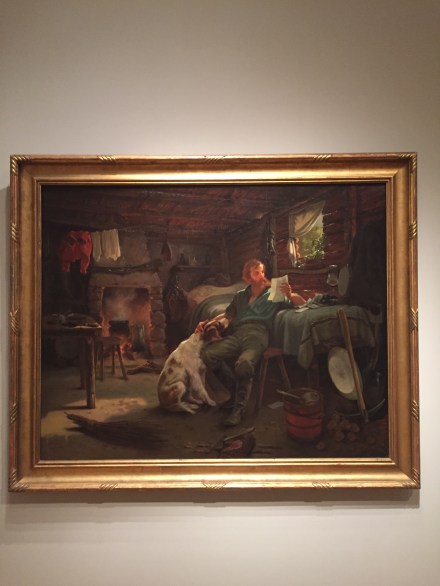


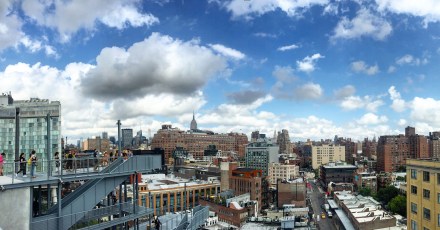
 I never feel more alive than when I am walking through Central Park and along the West Side Highway and through Bergdorf and sitting at Bemelmans or Barney Greengrass or crossing Manhattan to Staten Island on that aptly named ferry. It’s bliss to me. And then I come home and pore through my pictures, pore through the memories. I compare the lists, the places I made it to and the places I ran out of time for. And then I compile a new list, for the next trip. Do you have any idea how many times the Cloisters has been on my LIST? (And it doesn’t look good for it this time either.) My friends give me suggestions: Thank you Ivy for giving me THE FRICK. Thank you Joel for giving me THE TENEMENT MUSEUM. Thank you Traci for giving us the Museum of Arts and Design and by proxy, one of our favorite watering hole’s Robert on the 9th floor. Thank You Eboni for Levain.
I never feel more alive than when I am walking through Central Park and along the West Side Highway and through Bergdorf and sitting at Bemelmans or Barney Greengrass or crossing Manhattan to Staten Island on that aptly named ferry. It’s bliss to me. And then I come home and pore through my pictures, pore through the memories. I compare the lists, the places I made it to and the places I ran out of time for. And then I compile a new list, for the next trip. Do you have any idea how many times the Cloisters has been on my LIST? (And it doesn’t look good for it this time either.) My friends give me suggestions: Thank you Ivy for giving me THE FRICK. Thank you Joel for giving me THE TENEMENT MUSEUM. Thank you Traci for giving us the Museum of Arts and Design and by proxy, one of our favorite watering hole’s Robert on the 9th floor. Thank You Eboni for Levain.




